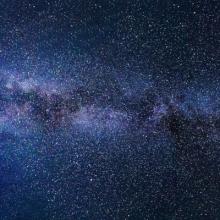
Description
Dr. Merritt and his collaborators will use the special-purpose hardware GRAPE to run direct N-body simulations with roughly a million particles, to study the motion of stars and of less massive black holes in a cusp around the Milky Way's central black hole, a few million times as massive as the Sun. This will be the first set of simulations that can represent each star near the Galactic center by a single particle. The simulations will use a new regularization scheme to follow stars that make close approaches to each other or to the black hole; this is adapted to handle extreme mass ratios between the approaching particles, and includes some relativistic effects. The code will be used to investigate how an intermediate-mass black hole of about 10,000 times the Sun's mass would affect the orbits of nuclear stars, and the build-up of the central supermassive black hole, as it spiraled inwards. The simulations will be used to test models for the origin and dynamical evolution of the observed stellar disks on scales below a parsec. Finally, the team will model relaxation of the stellar orbits in the vicinity of the central black hole, which controls how fast stars are nudged onto orbits from which the black hole will swallow them.
The work will be carried out with international collaborators in Europe and Israel, as well as colleagues and students at the Rochester Institute of Technology (RIT). The 'GRAPE group' of undergraduates and master's students from computer science and other disciplines will work on the visualization software. Dr Merritt will also work with the National Technical Institute for the Deaf on the RIT campus to attract deaf students into the GRAPE group.